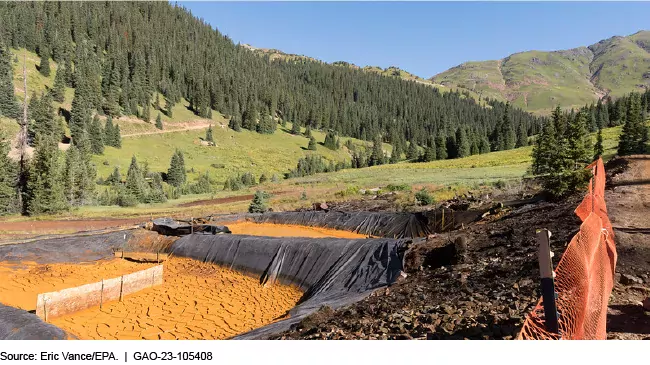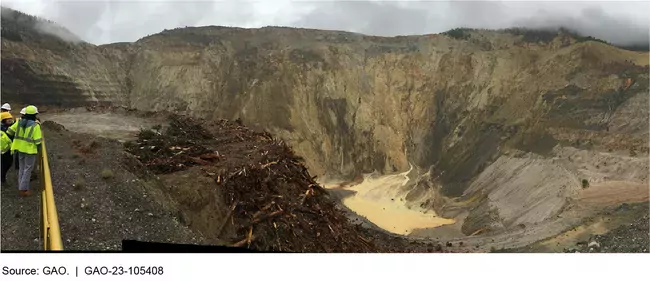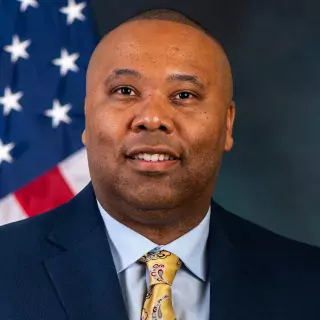From Gold Rush to Rot—The Lasting Environmental Costs and Financial Liabilities of Hardrock Mining
More than 100 years of hardrock mining on federal land brought prosperity to the U.S. economy—contributing crucial metals and minerals to industries such as transportation and defense. But this widespread mining has contributed to serious public health, safety, and environmental concerns. For example, the Environmental Protection Agency (EPA) estimates that abandoned hardrock mines have contributed to the contamination of 40% of the country’s rivers and 50% of all lakes.
Many of the companies that abandoned their mines did so long ago and those companies may not even exist anymore. As a result, the federal government, which owns the land, may be on the hook for cleanup costs. Today’s WatchBlog post looks at our new report on the effects of hardrock mining on communities, federal efforts to clean up abandoned mines, and the growing financial costs to taxpayers.
Abandoned mines can affect communities nearby
There are at least 22,500 abandoned hardrock mine features—such as pits or tunnels— on federal lands. They pose risks to human health and the environment because they can leak toxic chemicals (like arsenic) into waterways. One example is the Gold King mine in southwestern Colorado. Between 1887 and 1922, this mine produced about 700,000 tons of gold and silver. But once abandoned, metal-laden water and sediments seeped into nearby creeks and streams.
Nearly 100 years later, a 2015 EPA investigation of the site accidentally triggered a rapid release of about 3 million gallons of contaminated water from the mine into nearby Cement Creek. The spill affected rivers in three states and the Navajo Nation, leading to contaminated farm irrigation water and more. The federal government spent millions of dollars to clean up the Gold King mine and reached $63 million in financial settlements with New Mexico and the Navajo Nation to address harms to their communities.
Treatment Ponds at the Gold King Mine in Colorado
Image

Another, more recent example is the Questa mine in northern New Mexico, which mines metals used in steel production and more. This active mine contaminated local groundwater with lead, arsenic, and other pollutants. It threatened the village of Questa, which is 9 miles away, as well as the ecology of the area. Cleanup was underway as of October. The project is estimated to cost about $1 billion.
Mine Cleanup on Federal and Private Lands in New Mexico
Image

Why is the federal government paying for cleanup?
If the mining company responsible for the mine no longer exists, the government isn’t required to pay for cleanup—but people often expect the government to step in and help when their groundwater is contaminated.
How much is this costing taxpayers?
The federal government’s environmental liabilities—which include mine cleanup—increased about 32% (from $465 billion to $613 billion) between fiscal years 2017 and 2021. The ever-rising price tag prompted us to add federal environmental liabilities to our High Risk list.
Federal agencies involved in mine cleanup efforts told us there are more abandoned mines than funds to clean them up. But we’ve also recommended that these agencies ensure that they more clearly communicate about the costs of mine cleanup, so that Congress and the public can better understand the environmental and financial issues.
Learn more about what we found and recommended in our new report.
- Comments on GAO’s WatchBlog? Contact blog@gao.gov.
GAO Contacts
Related Products

GAO's mission is to provide Congress with fact-based, nonpartisan information that can help improve federal government performance and ensure accountability for the benefit of the American people. GAO launched its WatchBlog in January, 2014, as part of its continuing effort to reach its audiences—Congress and the American people—where they are currently looking for information.
The blog format allows GAO to provide a little more context about its work than it can offer on its other social media platforms. Posts will tie GAO work to current events and the news; show how GAO’s work is affecting agencies or legislation; highlight reports, testimonies, and issue areas where GAO does work; and provide information about GAO itself, among other things.
Please send any feedback on GAO's WatchBlog to blog@gao.gov.





